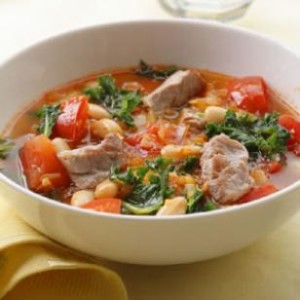Food Allergies and You
Food allergies are on the rise in the United States and it isn’t just infants and toddlers. More and more teens and adults are developing food allergies. A food allergy occurs when the body has an adverse reaction to a food, triggered by the bodies immune system. The most common antibody in food allergies is IgE (immunoglobulin E). IgE antibodies bind to specific molecules in food and trigger an immune response. Symptoms of food allergies are:
- Itching and/or swelling of the mouth
- Vomiting, diarrhea, abdominal cramps and/or pain
- Hives/rash
- Troubling breathing and throat tightening
- Drop in blood pressure.
But you don’t have to have a formal allergy to a food to have a negative reaction. A food intolerance is NOT an allergy, but can also cause distress none the less.
- Lactose intolerance-an inability to digest the lactose (milk sugar) in dairy. This can cause GI (gastrointestinal distress), diarrhea, bloating and general discomfort. AS we age, the enzyme we need to digest lactose diminishes greatly. Using Lactaid pills can assist with this intolerance, but if your reaction to dairy is severe you will have to play with dosage and might have to eliminate dairy altogether.
- Gluten intolerance- Although this is related to Celiac disease, it is not an allergy and does not involve an IgE response. It is the bodies inability to tolerate gluten:found in wheat, barley, rye and some oats. It can cause GI discomfort, brain fog, insomnia and an overall feeling of malaise. If you have gluten enteropathy/intolerance you should remove gluten in total.
- Food additives-Certain food enhancers and preservatives can also cause a reaction to foods, most notably sulfites (found in wine, dried fruit and sprayed on fruits and vegetables to keep them fresh) and MSG (used as a flavor enhancer, frequently used in Chinese cuisines). Headache, flushing, and difficulty breathing are the most common symptoms. If you are sensitive, you should avoid.
What should you do if you suspect you are having a food allergy or intolerance?
- Always talk to your physician first. Simple blood tests and possible further testing (such as breath tests and biopsies) might be necessary to rule out other conditions and to narrow down sensitivities.
- Start to keep a food journal. No one is a better detective about how things make you feel than yourself. Write down everything you eat in a day and how foods make you feel. You might notice you are able to connect dots to why you are feeling badly. A Registered Dietitian is always helpful in guiding you through this process.
- Once you have kept a food journal for awhile, consider eliminating one food at a time, not many foods at once. The top allergen foods are: wheat, eggs, soy, nuts and dairy. Pick the one you feel is possibly your issue and remove it entirely for two weeks. If you feel better, it may be the culprit. If not, put it back into your diet and choose the next food and repeat the process. It is beneficial to go through this process with an RD.
- Identifying the allergen is the first step. Then you have to create a diet that eliminates the offending food/s but to make sure you have not lost any nutrients along the way.
Finding out the food or foods that create discomfort can improve quality of life greatly and make you feel tremendously better. Pay attention to how you feel when you eat, and if you suspect you have developed and allergy or intolerance, it is important to address it as soon as possible.
Pork, White Bean & Kale Soup
From EatingWell: September/October 2007
Makes: 6 servings, about 1 2/3 cups each
Active Time: 40 minutes
Total Time: 40 minutes
INGREDIENTS
1 tablespoon extra-virgin olive oil
1 pound pork tenderloin, trimmed and cut into 1-inch pieces (you can substitute with boneless chicken cubes)
3/4 teaspoon salt
1 medium onion, finely chopped
4 cloves garlic, minced
2 teaspoons paprika, preferably smoked
1/4 teaspoon crushed red pepper, or to taste (optional)
1 cup white wine
4 plum tomatoes, chopped
4 cups reduced-sodium chicken broth
1 bunch kale, ribs removed, chopped (about 8 cups lightly packed)
1 15-ounce can white beans, rinsed (see Tip)
PREPARATION
Heat oil in a Dutch oven over medium-high heat. Add pork, sprinkle with salt and cook, stirring once or twice, until no longer pink on the outside, about 2 minutes. Transfer to a plate with tongs, leaving juices in the pot.
Add onion to the pot and cook, stirring often, until just beginning to brown, 2 to 3 minutes. Add garlic, paprika and crushed red pepper (if using) and cook, stirring constantly, until fragrant, about 30 seconds. Add wine and tomatoes, increase heat to high and stir to scrape up any browned bits. Add broth and bring to a boil.
Add kale and stir just until it wilts. Reduce heat to maintain a lively simmer and cook, stirring occasionally, until the kale is just tender, about 4 minutes. Stir in beans, the reserved pork and any accumulated juices; simmer until the beans and pork are heated through, about 2 minutes.
TIPS & NOTES
Tip: While we love the convenience of canned beans, they tend to be high in sodium. Give them a good rinse before adding to a recipe to rid them of some of their sodium (up to 35 percent) or opt for low-sodium or no-salt-added varieties. (Our recipes are analyzed with rinsed, regular canned beans.) Or, if you have the time, cook your own beans from scratch.
NUTRITION
Per serving: 262 calories; 6 g fat (1 g sat, 3 g mono); 45 mg cholesterol; 26 g carbohydrates; 25 g protein; 7 g fiber; 627 mg sodium; 1024 mg potassium.
Nutrition Bonus: Vitamin A (290% daily value), Vitamin C (190% dv), Potassium (29% dv), Iron (20% dv)
Carbohydrate Servings: 1




